Ticket management
View ticket
You can open up a ticket by clicking its title. You will see a form like this one:

Ticket form shows a conversation between the agent and the requester, the editor window and fields with information about the ticket. You may notice some messages are yellow, it tells that these messages are private notes that are visible to agents only and not to the requester. The requester will not receive any notifications about it and will not be able to read it. Also, there is a list of attachments on the right side of the view, below Tags.
The ticket’s change history can be opened by clicking the History button:
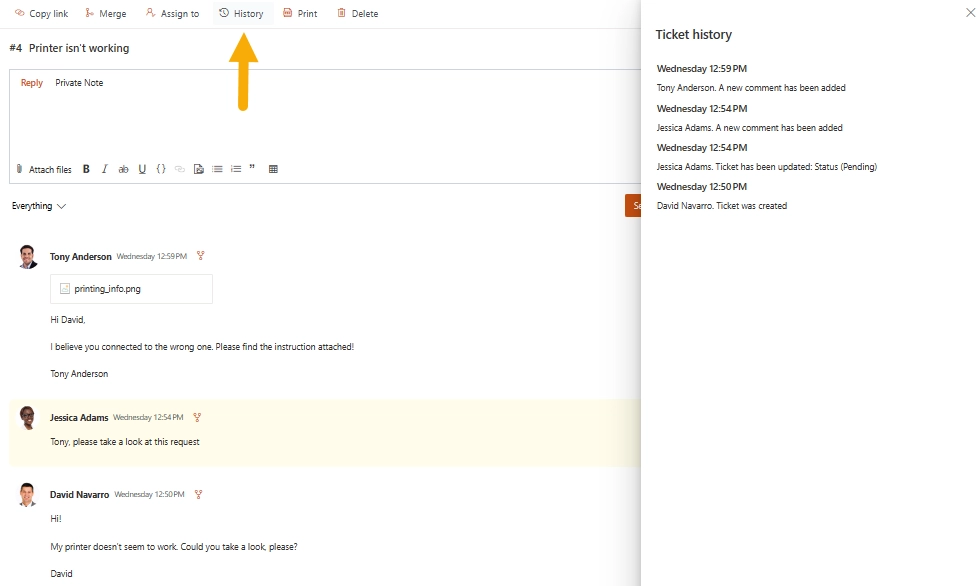
Once you opened the ticket form as the assignee, it is marked as read. But certainly, you may want to mark the ticket as unread back again. To do this, select the ticket you want to mark and click on Mark as Unread button. Note that only the ticket assignee can mark a ticket as unread.
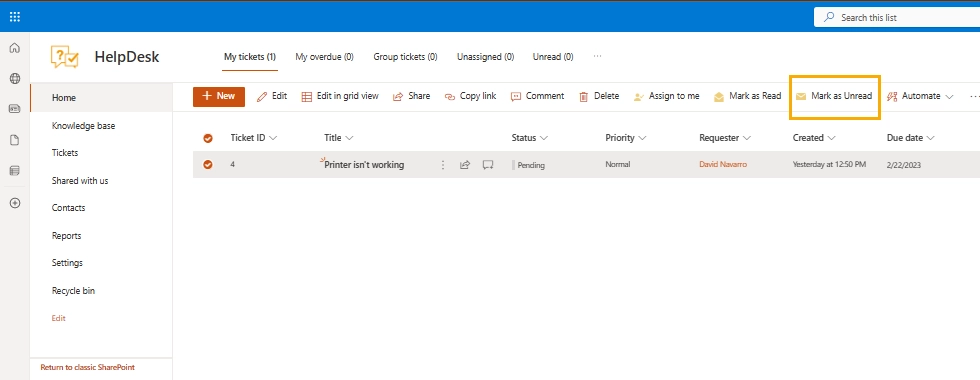
To search for a ticket with a given ID, just type the ID in the Search tickets field and hit Enter.

Note
Please refer to the article for further information on the ticket search.
Most of the ticket fields are displayed in the table on the right-hand side of the screen:
- Requester
The person from the Contacts list who requested the ticket (if the contact has his organization specified you’ll see it next to his name).
- Status
The ticket status. There are four statuses by default: New, In progress, Pending and Solved. You can also add your own custom statuses.
- Cc
Contacts specified in this field will receive the same notifications as the requester.
- Assigned to
The SharePoint user that is currently working on the ticket.
- Priority
Relative ticket priority (Low, Normal, High, Urgent).
- Due date
The date when the ticket has to be resolved by.
- Category
The type of the ticket (Question, Incident, Problem, Request). You can also create custom ticket categories to better match your workflow.
- Tags
Some key categories to classify the ticket.
Edit ticket and add comments
To open a ticket for edit just click it’s title.
Alternatively, you can open a ticket in edit mode from a list of tickets. Click on the appropriate button in the context menu:
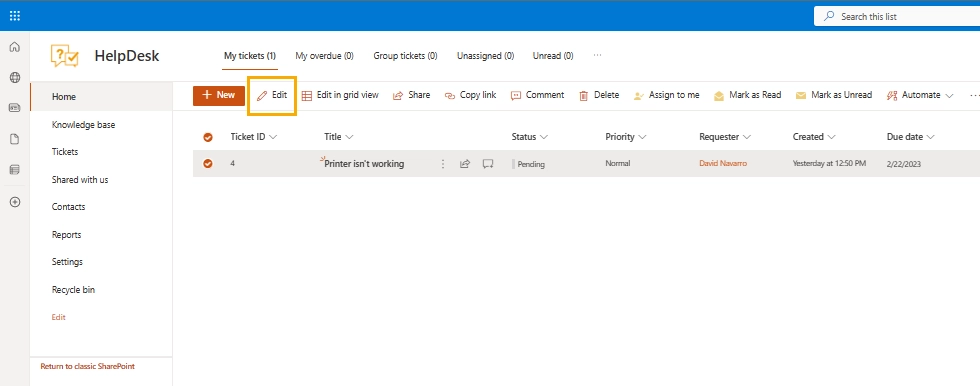
To add a reply or a private note, click the Reply or Private note button and enter your message. Then click on Send & … button, also selecting the status. If you select the Private note option, the editor will change the color to yellow.

Add new ticket
HelpDesk creates new tickets from email messages, but you may need to create a new ticket manually. Click the New button on top of the page:
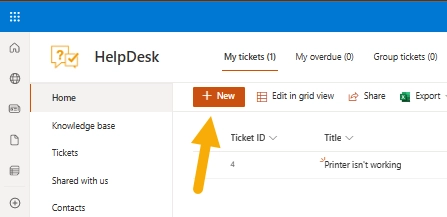
When creating a new ticket, Title, Requester and Priority fields are required to be filled in. Status of the ticket will be New by design.
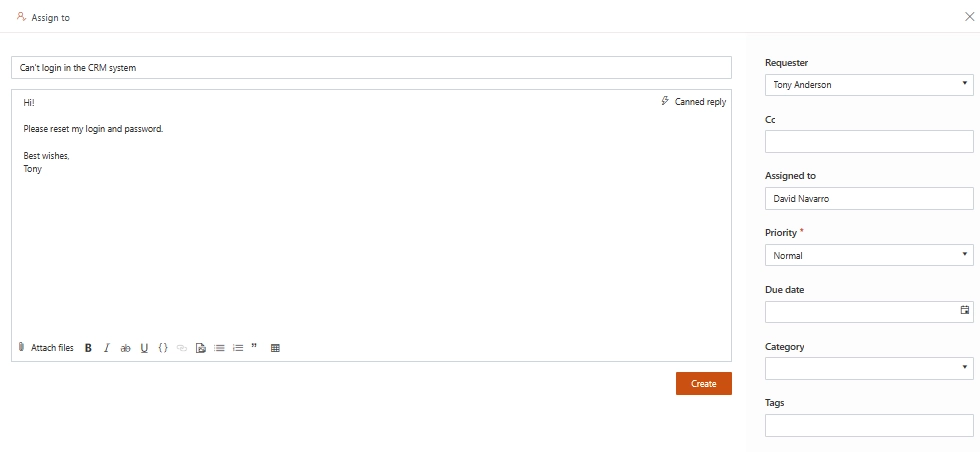
Understanding ticket’s statuses
In HelpDesk you have four built-in statuses: New, In progress, Pending and Solved. Each of them describes on which stage of resolving is the ticket placed.

Statuses New and In Progress are used for calculations of agent’s work time and resolution time of the ticket. These calculations are needed for metrics ‘First reply time’ and ‘Next reply time’ in SLA policies. SLA is always on pause when the ticket’s status is Pending. When End-user submits a ticket, ticket’s status will be New by default. It applies to tickets created by team members via HelpDesk interface as well. Then agent should provide a reply and change ticket’s status to Pending. After end-user has provided some feedback, ticket’s status will be automatically changed into In progress. This cycle can repeat as much as needed to resolve a ticket. When the ticket is resolved, agent should change its status to Solved.
Mentions
Note
Mentions work only in the light editor.
Mentions allow you to highlight specific comments to chosen contacts. Mentioned users will receive a direct email notification.
When writing your comment, type the “@” symbol followed by the contact’s name.
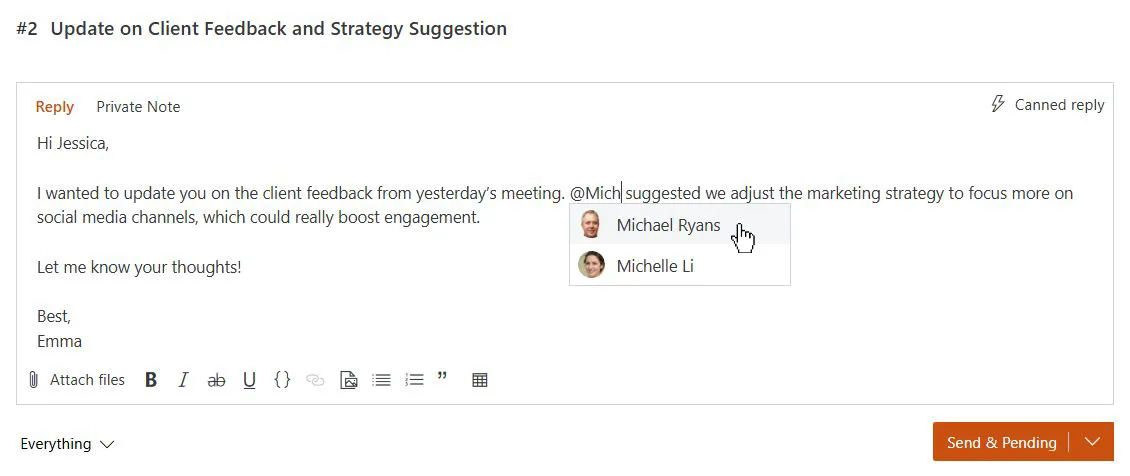
A dropdown list of matching contacts will appear. Select the desired contact from the list.
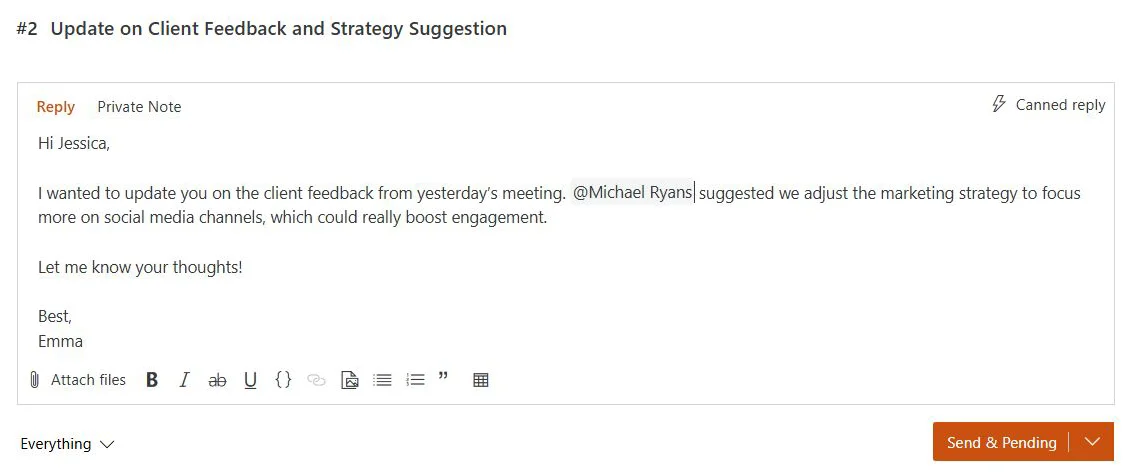
If you can’t find the contact you’re looking for, the dropdown will let you create a new HelpDesk contact for that user.
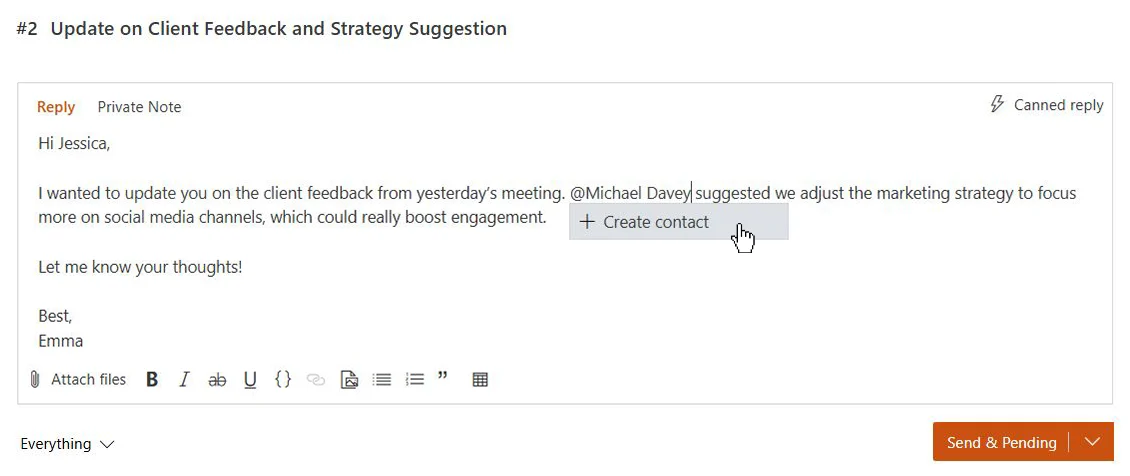
Once you’re done typing your comment, HelpDesk will email everyone included in the ticket and send an email notification to the contact mentioned.
Here’s how mentions work with different comment types:
Public Comments: You can mention any contact you like in a public comment, and they’ll be notified via the Mentions - Public comment created trigger.
Private Comments: You can only mention agents. If you switch the comment type from public to private, any mentions of non-agent contacts will be removed, leaving only their names in the message. Notifications are sent via the Mentions - Private note created trigger.
A couple of things to be aware of:
Mentions don’t add to CC: Mentioning someone doesn’t automatically add them to the ticket’s CC list. It only sends them a notification about the specific comment and they won’t get any future updates unless you add them to CC separately.
HelpDesk UI only: Mentions are only available for comments created within the HelpDesk user interface. Email-based mentions are not processed.
